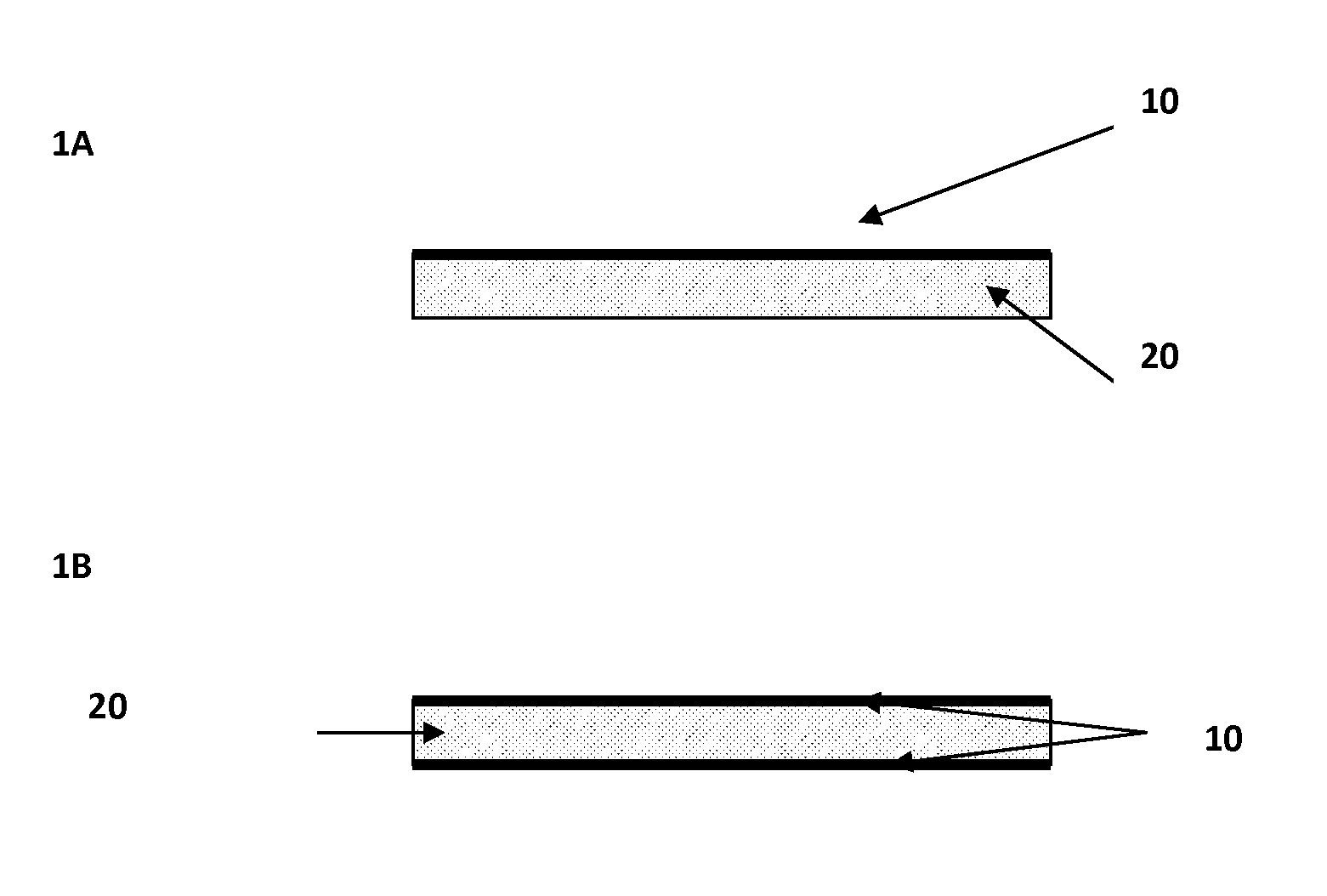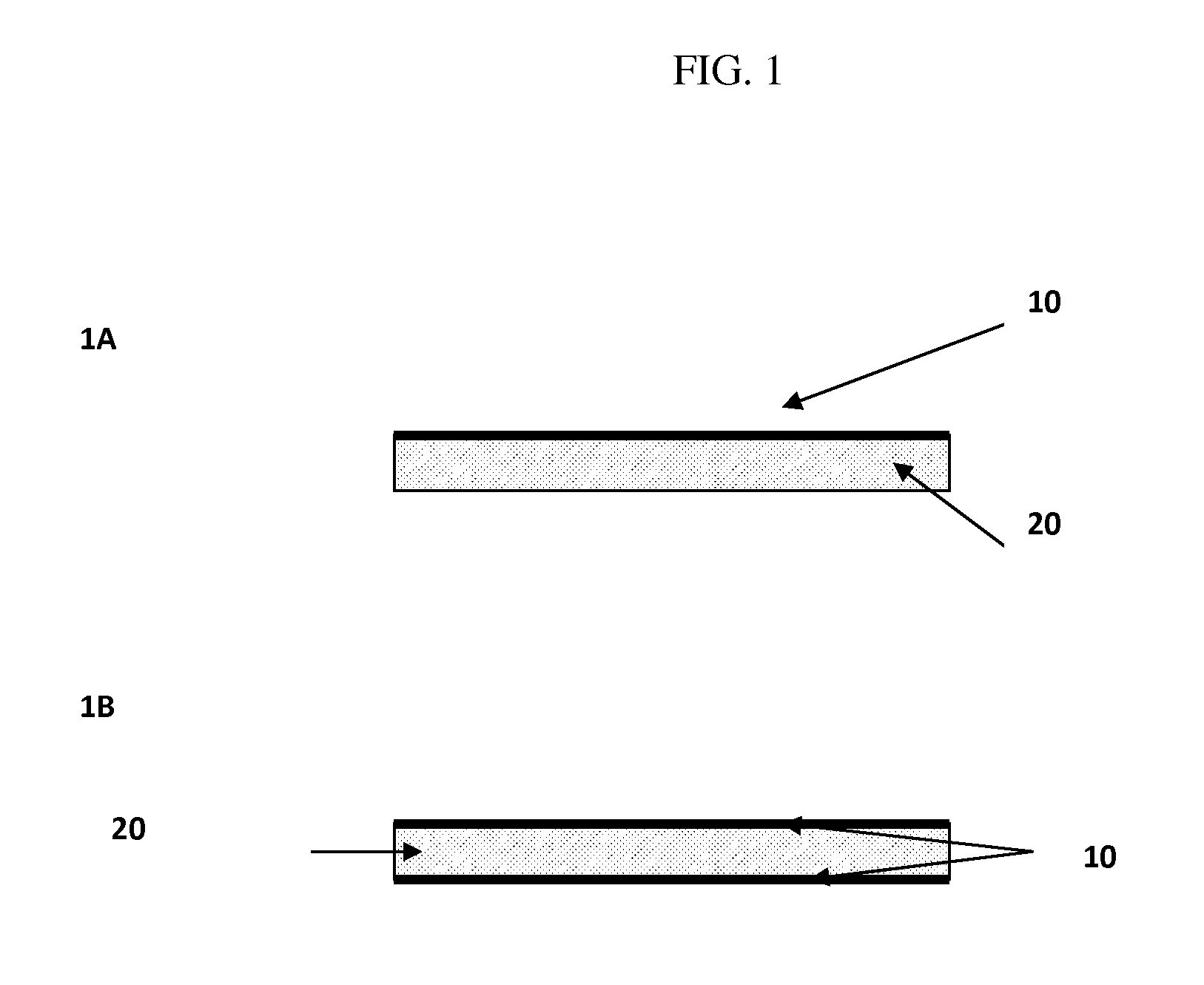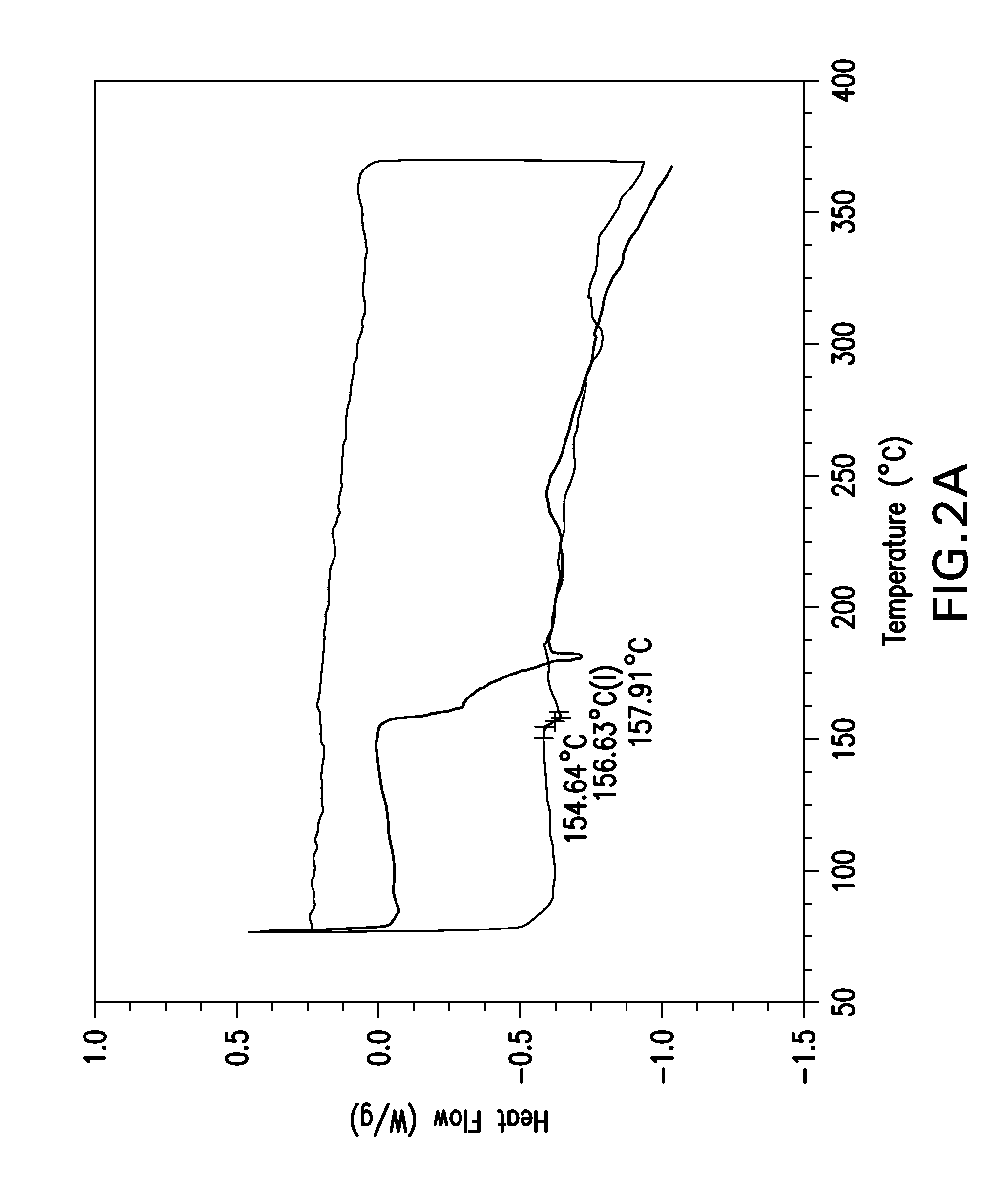Thermoplastic composites and methods of making and using same
a thermoplastic composite and composite material technology, applied in the field of thermoplastic composite materials, can solve the problems of voids or defects in the matrix coating, the overall production rate of the component is limited, and the difficulty of suppressing, etc., to achieve the effect of reducing the initial capital and facility cost investment, and fast crystallization
- Summary
- Abstract
- Description
- Claims
- Application Information
AI Technical Summary
Benefits of technology
Problems solved by technology
Method used
Image
Examples
example 1
Film Lamination Using Bi- or Tri-Layer In-Situ Thermoplastic Tape
[0050]A small press is heated to between 290° C. and 410° C. Kapton film is coated with a release agent and, with the press at the desired temperature, a bi- or tri-layer configuration is sandwiched between two pieces of the release agent coated Kapton film, thereby forming a lay-up. The lay-up is placed between the two 3″×3″ stainless steel caul plates of the press along with a thermocouple. The stack is inserted into the press and 1,000 lbs. of pressure is applied and held for a period of between 10 and 30 seconds. The pressure and top platen is then released and the stack is removed to cool under a cold press (1000 lbs. for 1 minute).
example 2
Comparative
[0051]An in-situ lay-down of a thermoplastic composite using laminated APC-2 / IM7 Unitape and Tri-layer laminated PEKK DS-E / / APC-2 / IM7 / / PEKK DS-E is performed using a thermoplastic automated tape laydown machine from Accudyne Systems Inc. (see U.S. Pat. No. 7,404,868). Laminates of a size 75 mm×1000 mm and a lay-up orientation of [0°]20 (20 ply unidirectional lay-up) are in-situ consolidated / placed. Key process parameters are Temperature (Lay-down temperature for fusing the tape to the laminate), Pressure (Head pressure to fuse the tape to laminate), and Speed (Speed of fusing the tape to the laminate). The run conditions and results for the in-situ ATL are reproduced in the table below and in FIGS. 3A and 3B.
[0052]
PanelTemp.PressureSpeedSBS AvgSBSResinVoid#Material° c.% Maxft / minksistd devwt. %Vol %1APC-236075510.10.331.23.082APC-23601001010.50.431.33.293APC-2410751010.70.233.12.774APC-24101005110.731.22.685Tri-layer360755120.2322.146Tri-layer3601001011.80332.727Tri-layer...
example 3
Cypek® PEKK DS-E Inter-Ply Testing
[0054]A laminate comprising 32 plies of uni-directional APC-PEKK-DS-M / AS-4 thermoplastic tape is prepared for consolidation as a test control article. An additional laminate is prepared according to the invention as described herein in detail, and includes two (2) sheets of Cypek® PEKK DS-E grade polymer film of 0.25 mm nominal thickness between each ply of APC-PEKK-DS-M / AS-4 thermoplastic tape. (FIGS. 4 A-B). Cypek® PEKK DS-E has the same chemical back bone of Cypek® PEKK DS-M used as the resin matrix in the APC-PEKK DS-M / AS4 thermoplastic tape, but has a weight average molecular weight that is 50% higher. Both panels are processed under vacuum in an autoclave at a pressure of 100 psi of N2 gas at a temperature of 391° C. for 20 minutes. The subsequent laminates are subjected to ultrasonic scan (C-scan) to confirm the quality of the laminates. The laminates are then subjected to 1500 in-lb. impact events and then are subjected to mechanical testing...
PUM
| Property | Measurement | Unit |
|---|---|---|
| melt viscosities | aaaaa | aaaaa |
| melt viscosities | aaaaa | aaaaa |
| viscosities | aaaaa | aaaaa |
Abstract
Description
Claims
Application Information
 Login to View More
Login to View More - R&D
- Intellectual Property
- Life Sciences
- Materials
- Tech Scout
- Unparalleled Data Quality
- Higher Quality Content
- 60% Fewer Hallucinations
Browse by: Latest US Patents, China's latest patents, Technical Efficacy Thesaurus, Application Domain, Technology Topic, Popular Technical Reports.
© 2025 PatSnap. All rights reserved.Legal|Privacy policy|Modern Slavery Act Transparency Statement|Sitemap|About US| Contact US: help@patsnap.com



